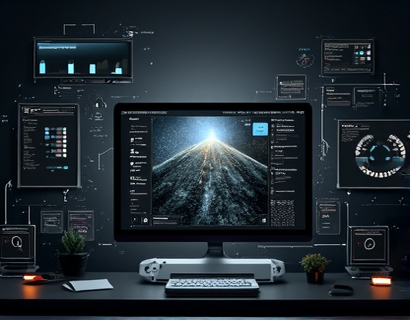Maximizing Civic Engagement: Leveraging Real-Time Data for Transparent Governance
In the digital age, the intersection of technology and governance has opened new avenues for civic engagement. Real-time data access stands as a pivotal tool in transforming the way citizens interact with their government, fostering a more transparent and accountable democratic process. This article explores the profound impact of real-time government data on civic participation and the mechanisms through which it revolutionizes transparency and engagement.
The Importance of Real-Time Data in Governance
Real-time data refers to information that is collected, processed, and made available to the public instantly or near-instantly. In the context of governance, this means that citizens can access updates on government activities, policy implementations, and public services as they happen. This immediacy is crucial for several reasons. Firstly, it ensures that the information citizens rely on is current and relevant, reducing the risk of misinformation. Secondly, real-time data enhances the responsiveness of government entities, allowing them to address issues and feedback promptly. Lastly, it builds trust between the government and its citizens by demonstrating a commitment to openness and transparency.
Enhancing Accountability Through Open Access
One of the most significant benefits of real-time government data is the enhancement of accountability. When government operations and decisions are made visible in real time, it becomes easier for citizens to monitor and evaluate the performance of their elected officials and public institutions. This transparency acts as a check on power, reducing the potential for corruption and mismanagement. Citizens can track budget allocations, project progress, and policy impacts with unprecedented ease, holding authorities accountable for their actions and decisions.
Case Studies of Successful Implementation
Several cities and countries have successfully implemented real-time data platforms to boost civic engagement and accountability. For instance, the city of New York launched NYC OpenData, a comprehensive portal that provides access to a wide range of city data sets. This initiative has enabled researchers, developers, and the general public to create applications and visualizations that highlight city operations and services. Similarly, the UK's Data.gov.uk offers a wealth of government data, fostering innovation and transparency. These platforms serve as models for how real-time data can be leveraged to enhance civic participation and government accountability.
Real-Time Data and Informed Citizen Participation
The availability of real-time data empowers citizens to make informed decisions and participate more actively in the democratic process. With immediate access to information on policy proposals, public consultations, and government actions, citizens can engage in meaningful discussions and provide timely feedback. This dynamic interaction not only enriches the quality of civic engagement but also ensures that government decisions reflect the needs and preferences of the community. Moreover, real-time data facilitates the formation of grassroots movements and community initiatives, as citizens can quickly mobilize around issues of concern.
The Role of Technology in Facilitating Access
Advanced technologies such as the Internet of Things (IoT), big data analytics, and cloud computing play a crucial role in making real-time government data accessible. IoT devices collect data from various sources, which is then processed and stored in cloud environments. This data is made available through user-friendly platforms and applications, ensuring that citizens can access it from anywhere at any time. The integration of these technologies not only streamlines data collection and dissemination but also enhances the user experience, making it easier for citizens to engage with government information.
Building a Collaborative Governance Model
Real-time data is not just a tool for transparency; it is a foundation for building a collaborative governance model. By fostering open communication and two-way interaction, governments can engage citizens as active partners in the decision-making process. This collaborative approach encourages co-creation of solutions, where citizens and government entities work together to address complex challenges. Real-time data platforms can serve as forums for dialogue, feedback, and collaboration, breaking down the traditional barriers between the government and the public.
Enhancing Public Services through Citizen Feedback
One of the most direct ways real-time data enhances governance is through the integration of citizen feedback into public service delivery. By analyzing data on citizen interactions and feedback, government agencies can identify areas for improvement and make data-driven decisions to enhance services. For example, real-time feedback on public transportation can help transit authorities optimize routes and schedules based on actual usage patterns. This not only improves service efficiency but also increases citizen satisfaction and trust in government operations.
Challenges and Considerations
While the benefits of real-time data in governance are clear, there are several challenges and considerations that must be addressed. Privacy and security are paramount concerns, as the collection and dissemination of large volumes of data raise questions about data protection and citizen privacy. Governments must implement robust security measures and adhere to strict data governance policies to ensure that personal information is safeguarded. Additionally, there is a need for digital literacy among citizens to fully leverage the potential of real-time data. Educational initiatives and user-friendly interfaces can help bridge the digital divide and ensure inclusive participation.
Balancing Transparency with Security
Achieving a balance between transparency and security is essential for the successful implementation of real-time data platforms. Governments must be transparent about the data they collect and how it is used, while also protecting sensitive information from unauthorized access. This requires a comprehensive approach to data governance, including clear policies, regular audits, and public reporting on security measures. By demonstrating a commitment to both transparency and security, governments can build trust and confidence among citizens.
The Future of Civic Engagement
The integration of real-time data into governance holds immense potential for transforming civic engagement and enhancing democratic processes. As technology continues to evolve, the opportunities for innovation and improvement are vast. The key lies in fostering a culture of openness and collaboration, where governments and citizens work together to create a more transparent, accountable, and participatory society. By embracing real-time data, we can build a future where governance is not just about ruling but about serving and empowering the people.
In conclusion, real-time data access is a powerful tool for maximizing civic engagement and ensuring transparent governance. It empowers citizens to participate more deeply in the democratic process, holds authorities accountable, and fosters a collaborative approach to governance. As we move forward, it is crucial to address the challenges and continue innovating to fully realize the benefits of this transformative technology.










































